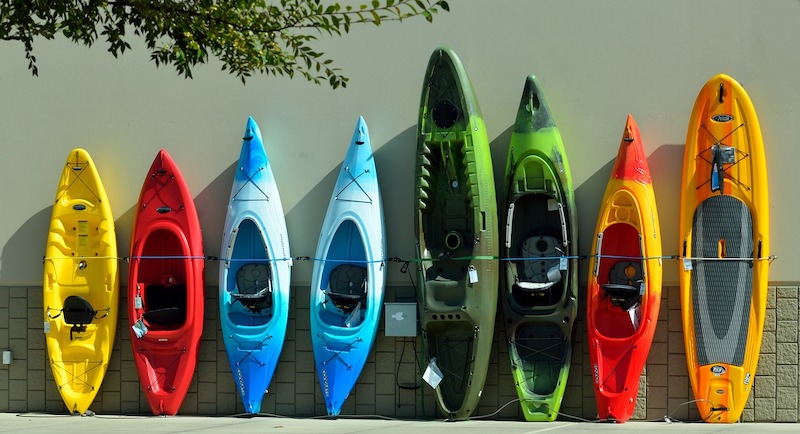The allure of the great outdoors has never been stronger, with more people than ever embracing activities like hiking, camping and cycling. However, one significant barrier for many enthusiasts is the cost of outdoor equipment. Quality gear, which is essential for both safety and enjoyment, can come with a hefty price tag. This article delves into the various ways individuals can finance their outdoor equipment, ensuring that financial constraints don’t hinder their passion for adventure.
Understanding the cost of outdoor equipment
Outdoor equipment encompasses a wide range of items, each varying in cost. Basic camping gear, for instance, might set you back a few hundred pounds, while specialised items like high-end mountain bikes or kayaks can cost many thousands of pounds. The price points vary based on the quality, brand and technology of the equipment. Understanding these costs is the first step in planning how to finance your outdoor gear.

Savings and budgeting strategies
The most straightforward way to finance outdoor equipment is through savings. This requires foresight and discipline. Start by setting a clear goal for the type and quality of equipment you need. Next, assess your budget to determine how much you can comfortably set aside each month. Consider opening a dedicated savings account, or using budgeting apps, to track your progress. This method ensures you purchase your gear without financial strain or debt.
Retailer financing programmes
Some outdoor equipment retailers offer financing programmes, allowing customers to purchase items on credit and pay them off over time. These programmes can be convenient but be sure to read the fine print.
Understand the interest rates, repayment terms and any potential penalties for late payments. Retailer financing can be a good option if the terms are favourable and you’re confident in your ability to meet the payment schedule.

Credit Cards for equipment financing
Credit cards are a common financing tool. Some cards offer rewards or cashback on purchases, which can be beneficial when buying expensive equipment. However, high-interest rates can make this an expensive option if you’re unable to pay off the balance quickly.
It’s crucial to compare different credit cards and choose one with the best terms and rewards for your spending habits and repayment ability.
Personal loans for outdoor equipment
Personal loans from banks or financial institutions can be used to finance outdoor equipment. They usually offer lower interest rates compared to credit cards and have fixed repayment schedules. When considering a personal loan, compare offers from multiple lenders to find the best interest rate and terms. Remember, a loan is a commitment and impacts your credit score, so borrow responsibly.
Instalment loans: A detailed look
Instalment loans are a structured way to finance purchases, where you pay back the loan amount plus interest in regular instalments. This option often allows for more manageable payments spread over time.
It’s ideal for expensive outdoor equipment, as it enables you to use the gear immediately while paying for it in smaller, predictable amounts. Ensure that the interest rates and total
payment amounts are within your financial capacity before committing to an instalment loan.

Peer-to-peer lending platforms
Peer-to-peer (P2P) lending platforms can be a viable alternative for financing outdoor equipment. These platforms connect borrowers with individual lenders, often offering more favourable terms and lower interest rates than traditional financial institutions. It’s essential to research and choose a reputable P2P lending platform. Be aware of the terms of the loan and the platform’s policies on late payments and defaults.
Rent-to-own options
Rent-to-own programmes can be a practical solution, especially for those who need equipment immediately but cannot afford outright purchase. These programmes allow you to rent the equipment with the option to buy it at the end of the rental period. While convenient, this option can end up costing more in the long run, so it’s important to compare the total costs against other financing methods.

Government grants and subsidies
In some regions, government grants or subsidies are available for individuals engaging in outdoor activities or for the purchase of specific types of equipment, such as environmentally-friendly gear. These programmes can provide financial assistance or tax incentives. Research local government websites or outdoor advocacy groups for information on available programmes.
Second-hand markets and trade-Ins
The second-hand market is an excellent source for affordable outdoor equipment. Online marketplaces, local outdoor clubs and second-hand stores – or sections in second-hand stores – often have quality gear at significantly reduced prices. Additionally, some retailers offer trade-in programmes where you can exchange old equipment for a discount on new purchases. This option not only saves money but also promotes sustainability.
Conclusion
In conclusion, there are several ways to finance outdoor equipment, each with its own set of advantages and considerations. From savings and budgeting to loans and rent-to-own programs, the key is to find a method that aligns with your financial situation and purchasing goals. Remember, investing in quality outdoor equipment enhances the safety and enjoyment of your adventures, making it a worthwhile endeavour.


